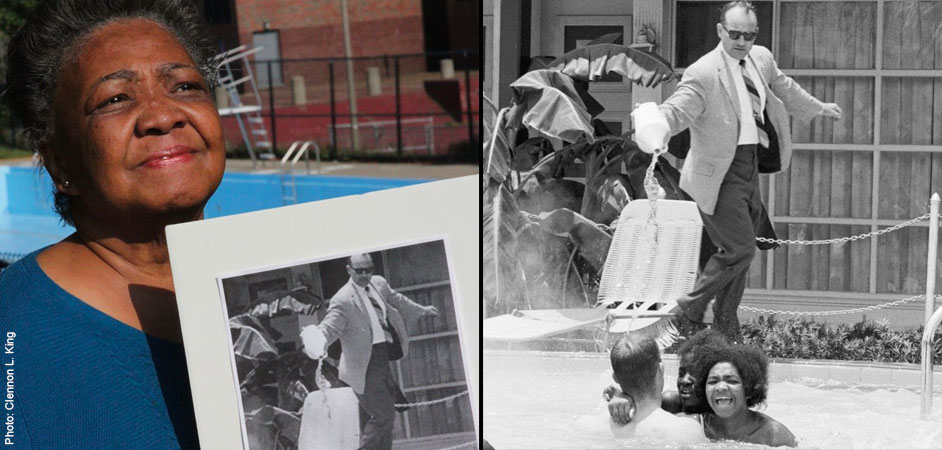The Detroit mother of five answered Dr. King's call for volunteers and traveled to Alabama to help during the Selma March.
 On the final day of the historic Selma to Montgomery March on March 25, 1965, civil rights activist Viola Liuzzo was helping shuttle marchers from Montgomery, Alabama back to Selma in her car, along with a fellow activist, 19-year-old Leroy Moton. When she stopped at a red light, a car filled with local Ku Klux Klan members pulled up alongside them. When they saw Liuzzo, a White woman, and Moton, a Black man, together, they followed them, pulled a gun, and shot directly at Liuzzo. She was killed by a bullet to the head; Moton, who was covered in her blood and knocked unconscious, was assumed to to be dead by the Klan members who investigated the crashed vehicle. The murder of the 39-year-old Liuzzo, a Detroit housewife and mother of five, shocked millions of people around the country and, along with the outrage at the violent treatment of many of the Selma protesters, helped to spur the signing of the historic 1965 Voting Rights Act five months later. Continue reading Continue reading
On the final day of the historic Selma to Montgomery March on March 25, 1965, civil rights activist Viola Liuzzo was helping shuttle marchers from Montgomery, Alabama back to Selma in her car, along with a fellow activist, 19-year-old Leroy Moton. When she stopped at a red light, a car filled with local Ku Klux Klan members pulled up alongside them. When they saw Liuzzo, a White woman, and Moton, a Black man, together, they followed them, pulled a gun, and shot directly at Liuzzo. She was killed by a bullet to the head; Moton, who was covered in her blood and knocked unconscious, was assumed to to be dead by the Klan members who investigated the crashed vehicle. The murder of the 39-year-old Liuzzo, a Detroit housewife and mother of five, shocked millions of people around the country and, along with the outrage at the violent treatment of many of the Selma protesters, helped to spur the signing of the historic 1965 Voting Rights Act five months later. Continue reading Continue reading










